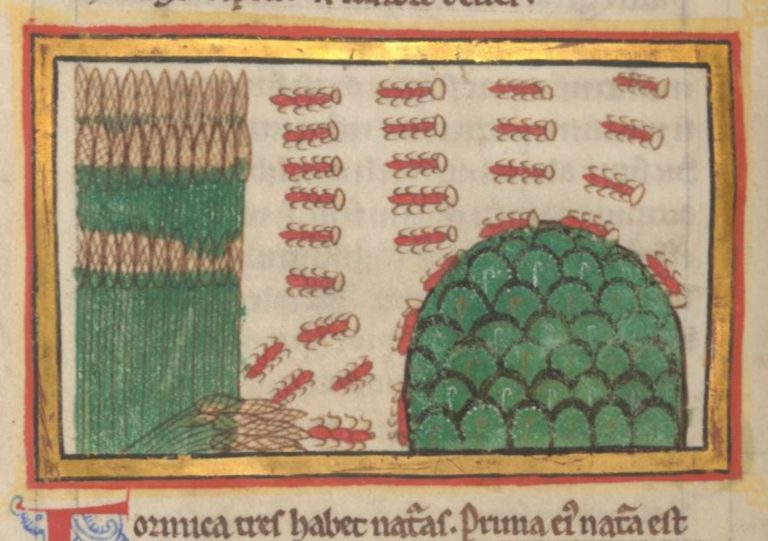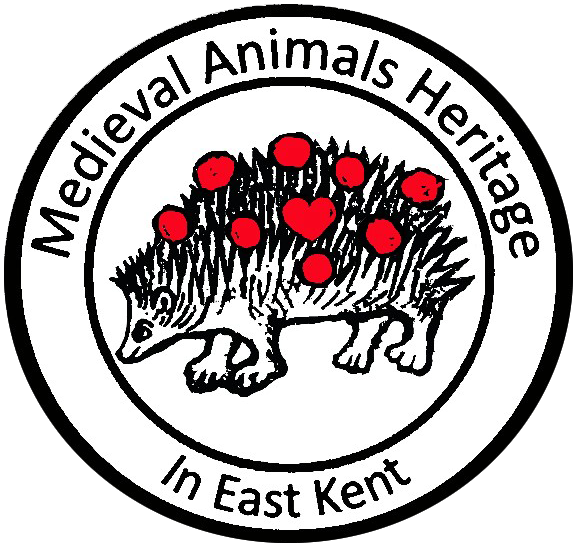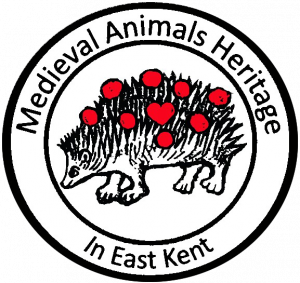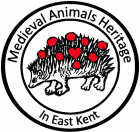WHAT IS THE PROJECT ALL ABOUT?
Medieval Animals are a wonderful local heritage (think Fantastic Beasts and Pokémon but weirder and much more fun!).
Real and imaginary animals had their stories told in medieval books, paintings, and sculpture. They helped to inspire and express people’s sense of wonder in the natural world.
St Anselm and other medieval writers in medieval East Kent sought to engage everyone’s feelings by making animals the bearers of emotional meanings. Now we are going to reimagine their creativity and help children to better understand their emotions and support everyone’s wellbeing by enthusing about our fantastic local heritage.
We shall use inspirational medieval ‘green heritage’ traced in rare native animals, manuscripts, folklore and traditions and medieval archaeology to foreground local and national history and ecology. This is a rare and important story that draws in people and animals from all over the medieval world.
12 Days of Christmas - Medieval Animals
We have had fun changing the words of The Twelve Days of Christmas carol to include more medieval animals. SEND families came to Canterbury Christ Church University for a Making Christmas party and we sung this carol with gusto.
OUR HERITAGE PROJECT
Our project focuses on the rich diversity of East Kent Medieval Animals Heritage (MAH) that spans nearly a thousand years. Our heritage project is linked to the life and legacy of the remarkable Saint Anselm, a theologian and Archbishop of Canterbury from 1093 until 1109. St Anselm oversaw a spiritual and intellectual renaissance in East Kent.
Less well-known is Anselm’s emphasis on creation and the natural world. Medieval animals have been linked to St Francis, but this project brings the much more ancient bestiary tradition to the fore and shows how these books of beasts were used by St Anselm and his kinsman Honorius in East Kent to connect spirituality to people’s emotions in what became an important local and international heritage.
Anselm is in effect our early St Francis. Examples from St Anselm’s writings include the soaring eagle, the beautiful Pearl and the frightened Hare. There is also the stunningly beautiful thirteenth-century Rochester Bestiary, with its golden scenes of brave Lions, Unicorns and Tigers. You can find out more on these amazing books of beasts here.
KEEPING OUR LOCAL HERITAGE
Our amazing local medieval animal cultural artefacts, stories, and values have neither been talked about nor taught. We are in danger of losing an immensely rich seam of community heritage. By linking key eco-heritage sites with medieval historical sites we hope that many local people will better understand their local medieval animals’ heritage via living creatures, stunning medieval art, and zooarchaeological material and make it part of their own story.
Please read about what we have planned. Please do join in – you are very welcome.
Recent News & Events

Chapter One: Woodwose, Wild Figures, and the Semi-Human
Of all the creatures to roam the medieval and early modern imagination one above all others epitomised the wilderness in which it lived; representing the untamed world beyond both physical space and social conformity: the woodwose, or wild man.
Skin and Bone, Wood and Stone Exhibition
The exhibition celebrated the Medieval Animals Heritage Project with examples of children’s art, Snail models, artefacts, Hoodening creatures, and even a facsimile bestiary. The Virtual

Bugs in the Medieval Bestiary: The Ant
Thank you very much for signing up to our new and (we very much hope) fun project to translate and then update the earliest medieval Latin prose bestiary. Your help will be invaluable in allowing us to spread these wonderful (and occasionally bizarre) stories about Medieval Animals and the task is a core part of the Medieval Animals Heritage in East Kent project. Thank you for joining us.
CREATURE FEATURE
Every fortnight we shall introduce a new Creature from the very first medieval Latin bestiary or Book of Beasts from England – which has never before been translated into English. The translations are made by our teams of volunteers having fun with Beastly Latin – do join us and download a weekly translation, loads of tips and advice – and splendid images here. Our creatures will run the website (with help from their friends) – tell you their stories, how they feel about heir lives and what they want to do next.
THE LION
We really should start with the King of the Beasts because he comes at the beginning of nearly all the Books of Beasts. The Lion is the King of all the animals, and he is a magnificent creature. Let’s find out about him.
He has three natures (this is added to in later books).
First, the Lion walks in the high mountains and sweeps away his pawprints with his tail so that hunters cannot track him.
Second, The Lion is awake even when he seems to be sleeping – rather like Captain Jack Sparrow in Pirates of the Caribbean with his painted eyelids.
Third, the Lion breathes new life into his stillborn cubs after three days – becoming a figure for hope in the future.
FOLLOW US
Follow us on Instagram for more medieval animal facts and stories…



